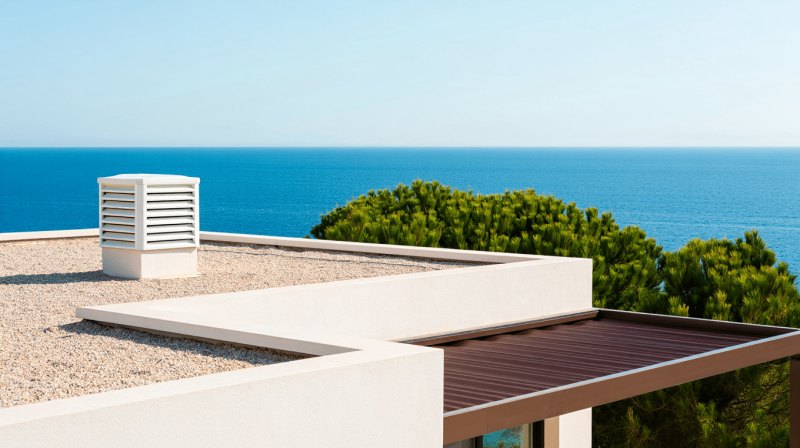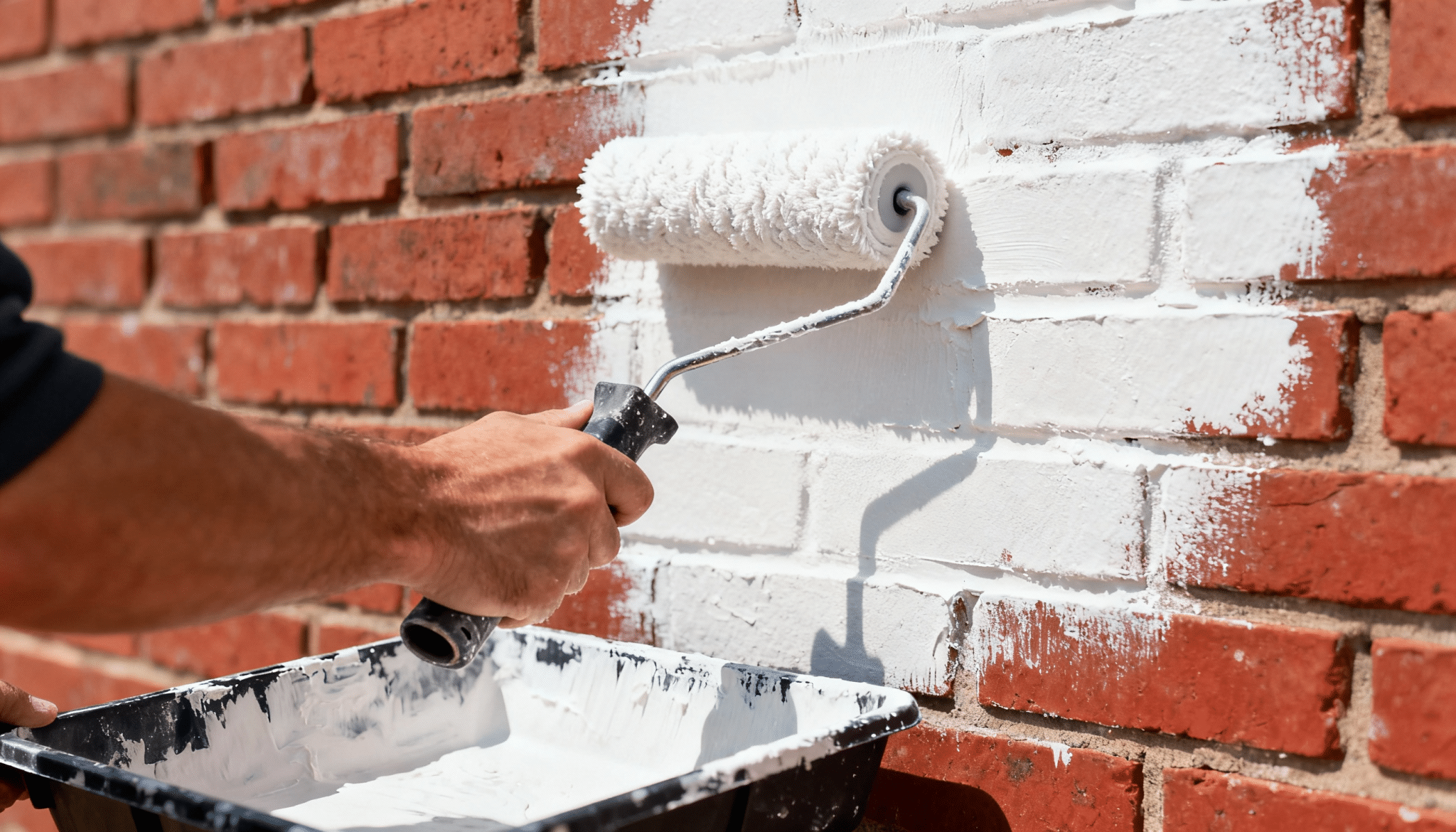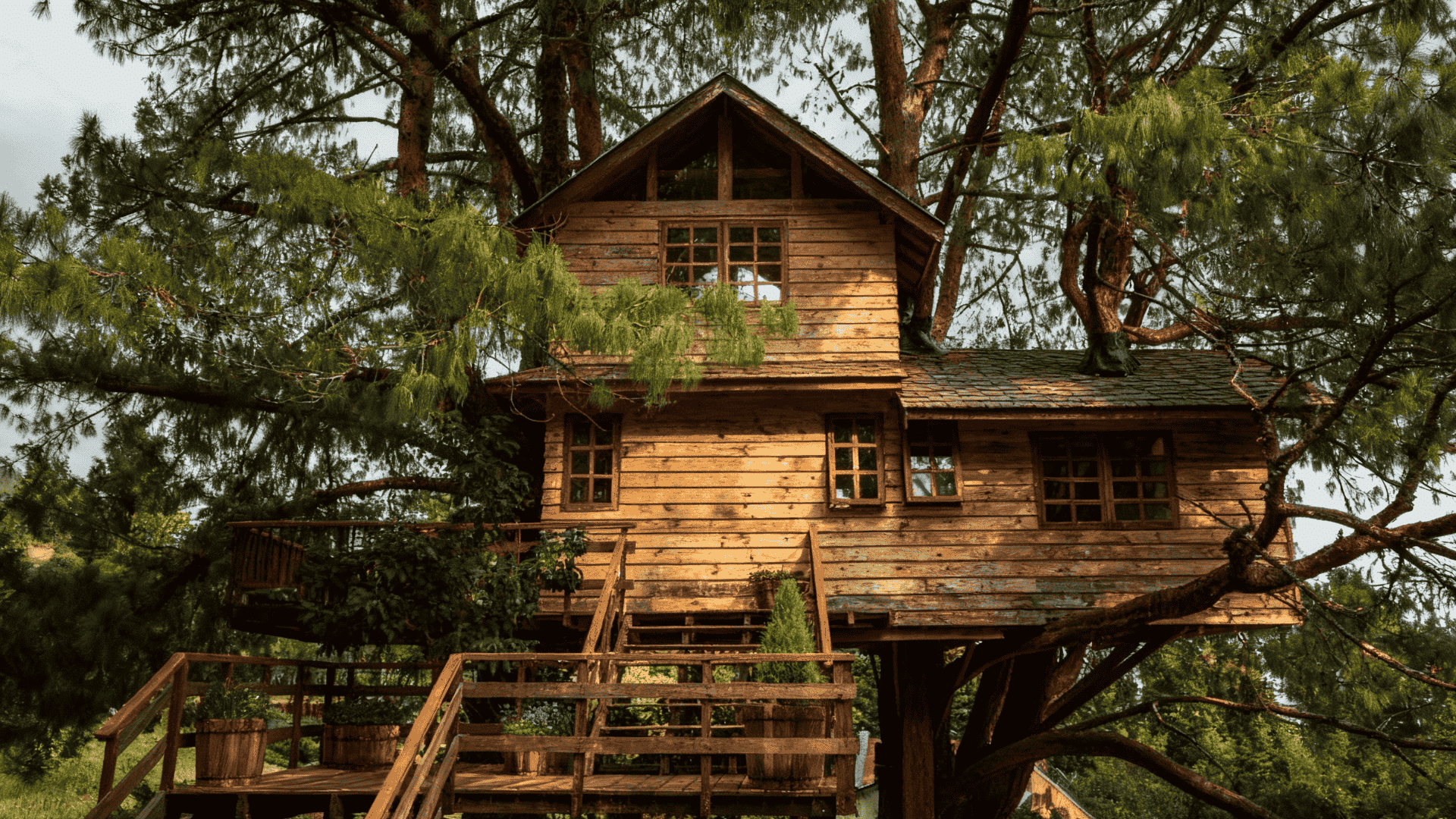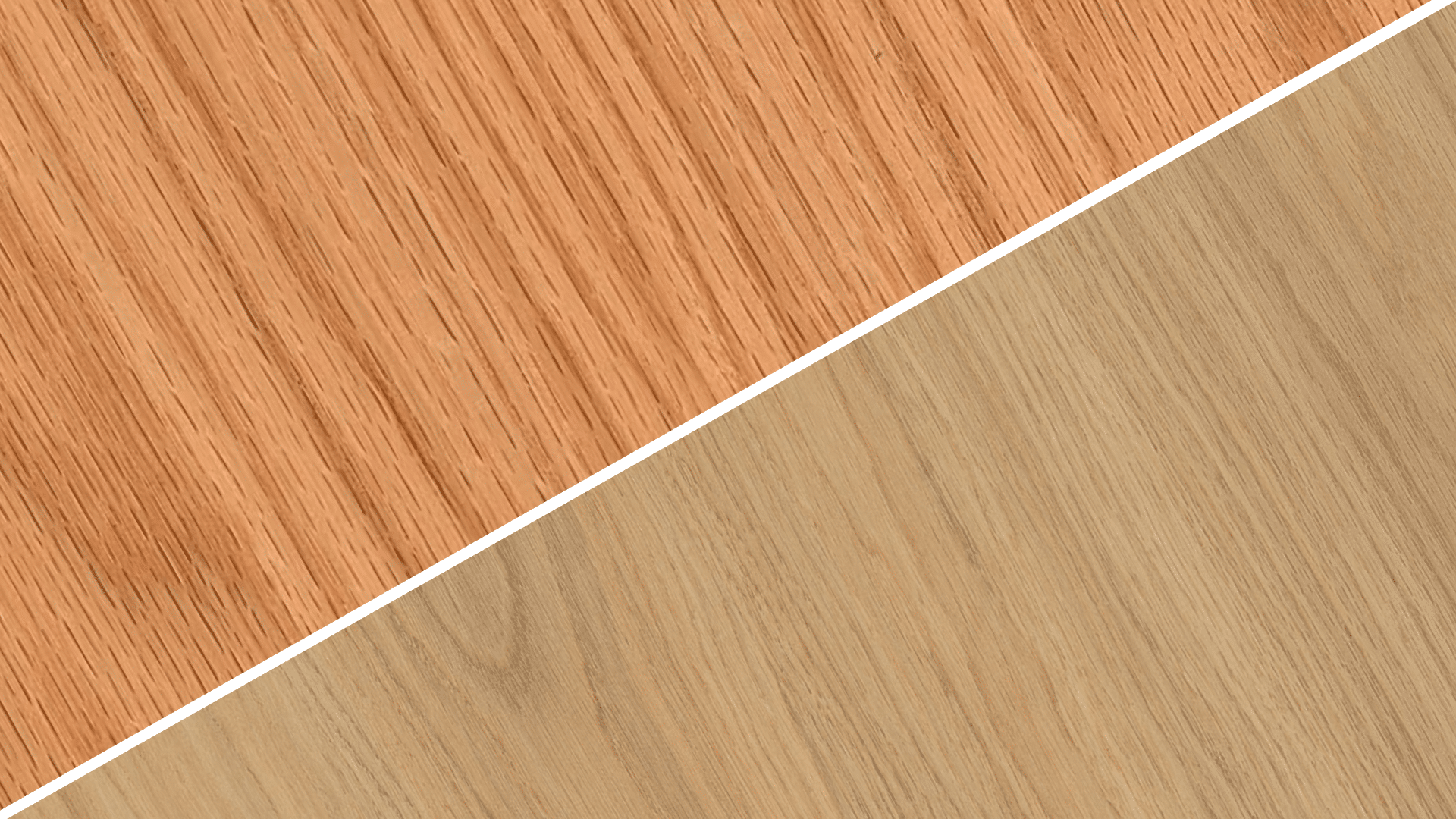You’ve probably noticed more homeowners talking about ballasted roof lately. And for good reason!
These systems are quietly winning attention for their solid performance and clean looks. Most people don’t really understand what they’re getting into.
I’m here to change that. In this post, I’ll break down everything you need to know about ballasted roofs.
We’ll cover how the system works, the real pros and cons, what installation looks like, and the design possibilities for your home.
What Exactly is the Ballasted Roof System?
Picture a roof that stays put using weight instead of nails or glue. That’s a ballasted roof! It’s a flat roofing system where heavy materials like stones or concrete blocks hold everything in place.
Unlike traditional roofs that get mechanically attached or fully adhered, this one relies on gravity to do the work.
I like to think of it as a layered sandwich. You’ve got the structural deck at the bottom, then insulation, followed by a waterproof membrane, and finally the ballast material on top. Common ballast options include gravel, concrete pavers, or stone blocks.
The weight keeps your roof stable against wind uplift. Rain drains through the ballast, and the mass helps regulate temperature swings naturally.
Weighing the Pros and Cons of a Ballasted Roof
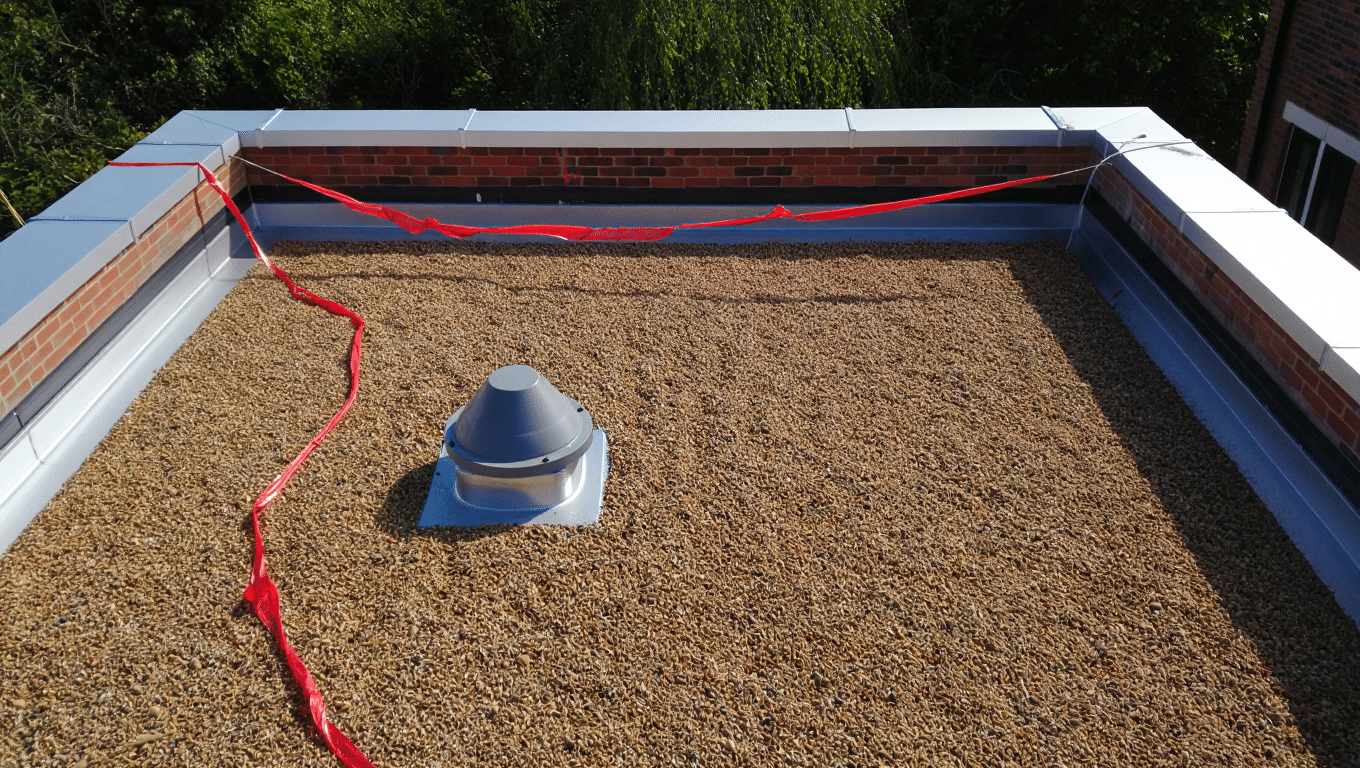
Like any roofing system, ballasted roofs come with both benefits and challenges. Let me walk you through what I’ve learned about the real advantages and potential issues you should consider.
Top Advantages You Should Know
I’ll be honest, ballasted roofs come with some pretty solid benefits. Here’s what makes them appealing to many homeowners:
1. Easy Maintenance and Repairs: Membrane fixes are straightforward since you just move the ballast aside. No need to worry about puncturing adhesives or mechanical fasteners. I can access problem areas without major disruption
2. Natural Protection: The ballast acts like a shield against UV rays and hail damage. Your membrane lasts longer because it’s not directly exposed to the weather. Temperature fluctuations stay more stable underneath
3. Environmental and Cost Benefits: Many ballast materials are recyclable or locally sourced. Better thermal efficiency means lower energy bills over time. Lifecycle costs often beat traditional roofing systems
Potential Drawbacks to Consider
But let’s talk about the challenges, too. I want you to know what you’re getting into:
1. Structural Concerns: Your building needs to handle the extra weight. Most ballasted roofs add 10-25 pounds per square foot. That’s significant, and not every structure can manage it safely.
2. Drainage Issues: Water needs clear paths to drains. Ballast can shift and block drainage over time. Poor drainage leads to ponding and potential leaks
3. Climate and Code Limitations: Some areas with extreme weather or strict building codes don’t allow ballasted systems. Always check local requirements first.
How to Install a Ballasted Roof?
Installing a ‘ballasted roof’ isn’t something you tackle on a weekend. Let me walk you through the key steps and considerations so you know what’s involved before you start.
Pre-Installation Prep
- Structural Analysis: I get a structural engineer to confirm that your deck can handle 10-25 pounds per square foot. This step isn’t optional.
- Measure and Plan: Measure your roof area and use wind zone maps to calculate exact ballast needs. Drainage locations get marked on my plans.
- Design Layout: Create a detailed membrane layout with seam locations. Edge details need special attention since they’re weak spots.
- Order Materials: I order insulation, membrane, and ballast based on calculations. Always get 10% extra for waste.
Placement of Membrane and Ballast
- Prep the Deck: Clean the structural deck thoroughly. The surface must be smooth and dry.
- Install Insulation: Insulation boards go down first. I butt them tightly and stagger joints like bricks.
- Roll Out Membrane: Unroll the waterproof membrane over the insulation. Seams get properly welded per the manufacturer’s specs. Check for wrinkles or air bubbles.
- Place Ballast: Using cranes or conveyor systems, I spread ballast evenly, about 2 inches thick across the surface.
- Final Inspection: I walk the roof, checking ballast distribution and drainage flow. Everything should be level and properly positioned.
Innovations in Ballasted Roof Design
Ballasted roofs don’t have to be boring gravel fields anymore. I’m excited to show you some creative ways homeowners are making these systems both functional and beautiful.
1. Integrated Green Roof Modules
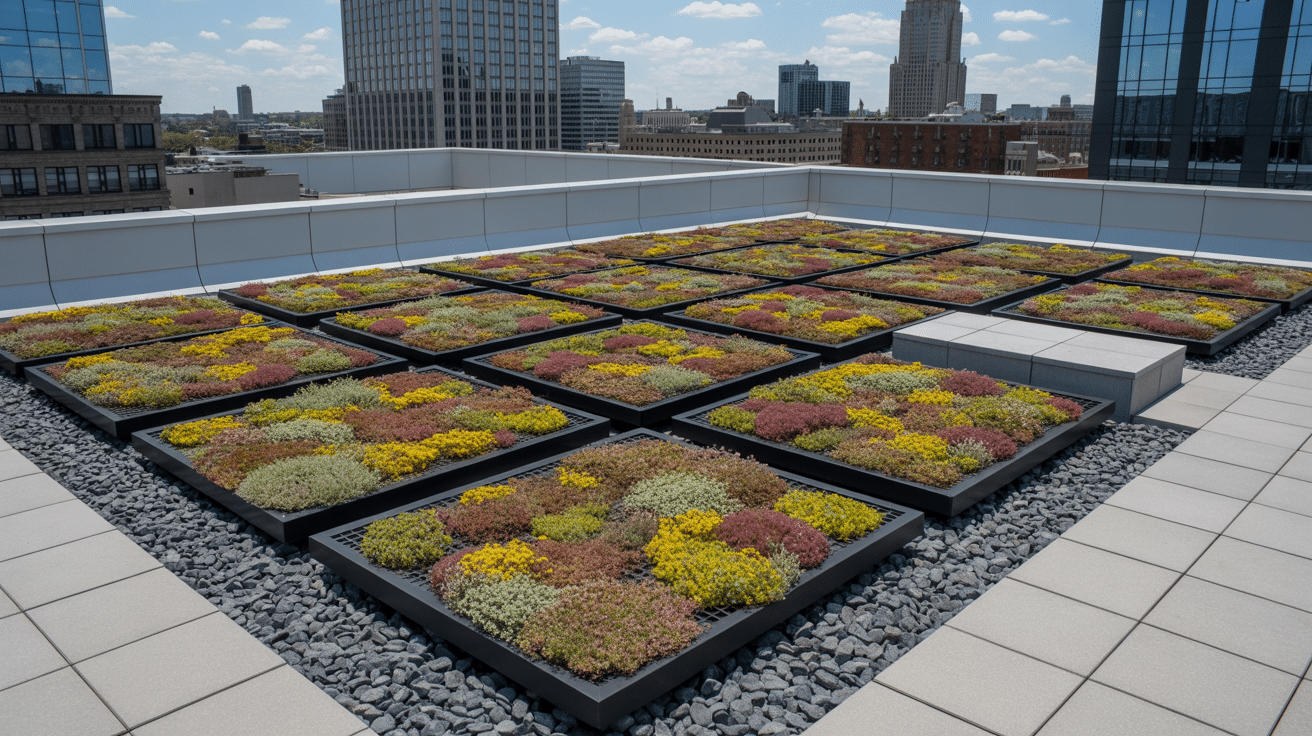
I love how modern ballasted systems can work with living roofs. You can combine the stability of ballast with modular green roof trays or planters.
I use paver grid systems to frame lightweight sedum mats or modular planters between ballast zones. This creates defined growing areas while keeping the system simple.
- Benefit: better biodiversity, insulation, and stormwater retention without losing the ballast advantages.
- Pro Tip: I always choose drought-resistant native plants and make sure drainage paths stay clear. The last thing you want is roots blocking your roof drains.
2. Architectural Stone Patterns
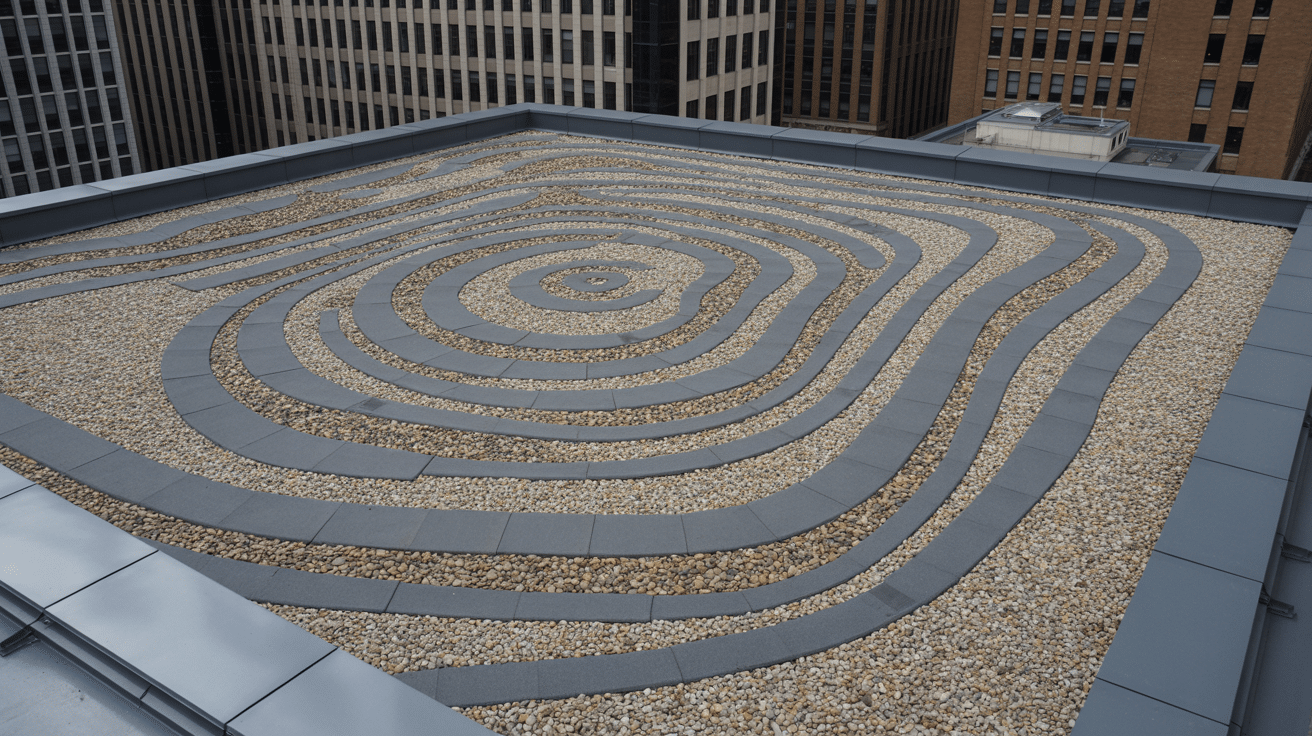
Why settle for boring uniform gravel? I help homeowners create geometric or organic stone layouts that actually look good.
Use contrasting ballast materials like pea gravel versus river rock to form stripes, spirals, or border outlines. These patterns are visible from above and add real visual interest.
- Benefit: Your roof becomes attractive for rooftop patios or when neighbors can see it from higher floors.
- Pro Tip: I lay stones over durable separator fabric to keep design patterns intact over time.
3. Ballasted Solar Mount Integration
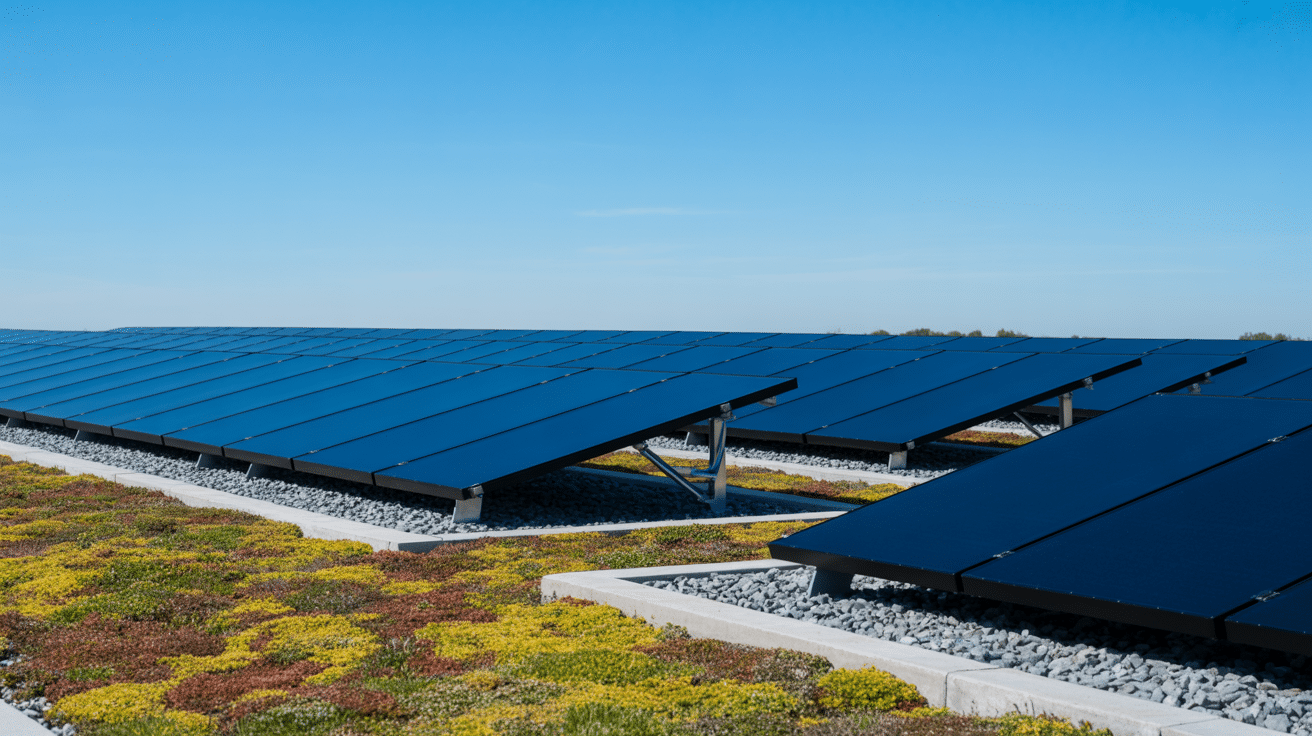
Here’s where things get smart, using ballast to anchor solar panels without roof penetrations. I recommend solar panel racking systems specifically designed to be weighed down by stone ballast. No screws, no holes, no membrane damage.
- Benefit: You preserve your roof’s integrity while generating clean energy.
- Pro Tip: Make sure your ballasting meets local wind uplift codes. I also leave access space for routine inspection underneath panels.
4. Rooftop Zen or Meditation Zones
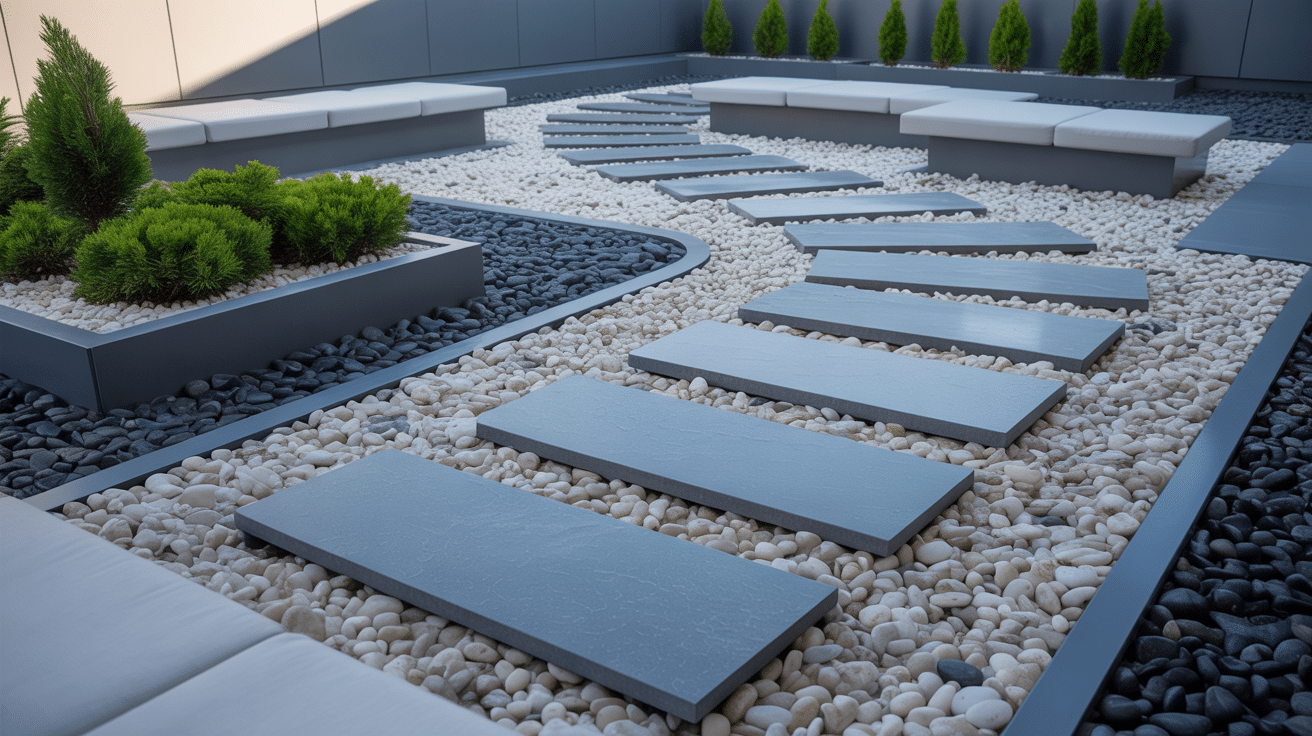
I’ve helped transform parts of ballasted roofs into peaceful outdoor spaces. Use flat stone pavers to create pathways or platforms. Surround them with polished stones or gravel, and add low-maintenance seating areas.
- Benefit: You get a serene, usable outdoor area without major construction work.
- Pro Tip: Install pavers over rubber pedestals to allow drainage and avoid damaging the membrane underneath.
5. Glass Aggregate or Glow-in-the-Dark Ballast

Want something different? I sometimes replace traditional ballast with decorative glass aggregates or luminescent stone.
Mix recycled crushed glass or photoluminescent pebbles into your ballast. This creates a glowing effect at night that’s really striking.
- Benefit: Adds unexpected visual appeal and improves nighttime visibility for roof access.
- Pro Tip: Use UV-resistant coatings to preserve color over time.
6. Mixed-Use Zones with Removable Ballast

I design ballasted roofs with multi-zone utility – some areas for equipment, others for aesthetics or people.
Use ballasted areas to protect HVAC equipment while keeping clear modular paver zones for seating, gardening, or walking.
- Benefit: You balance function and form while keeping maintenance zones easy to access.
- Pro Tip: I mark ballast zones with color or texture variations to separate utility from recreational space.
7. Rainwater Harvesting Integration
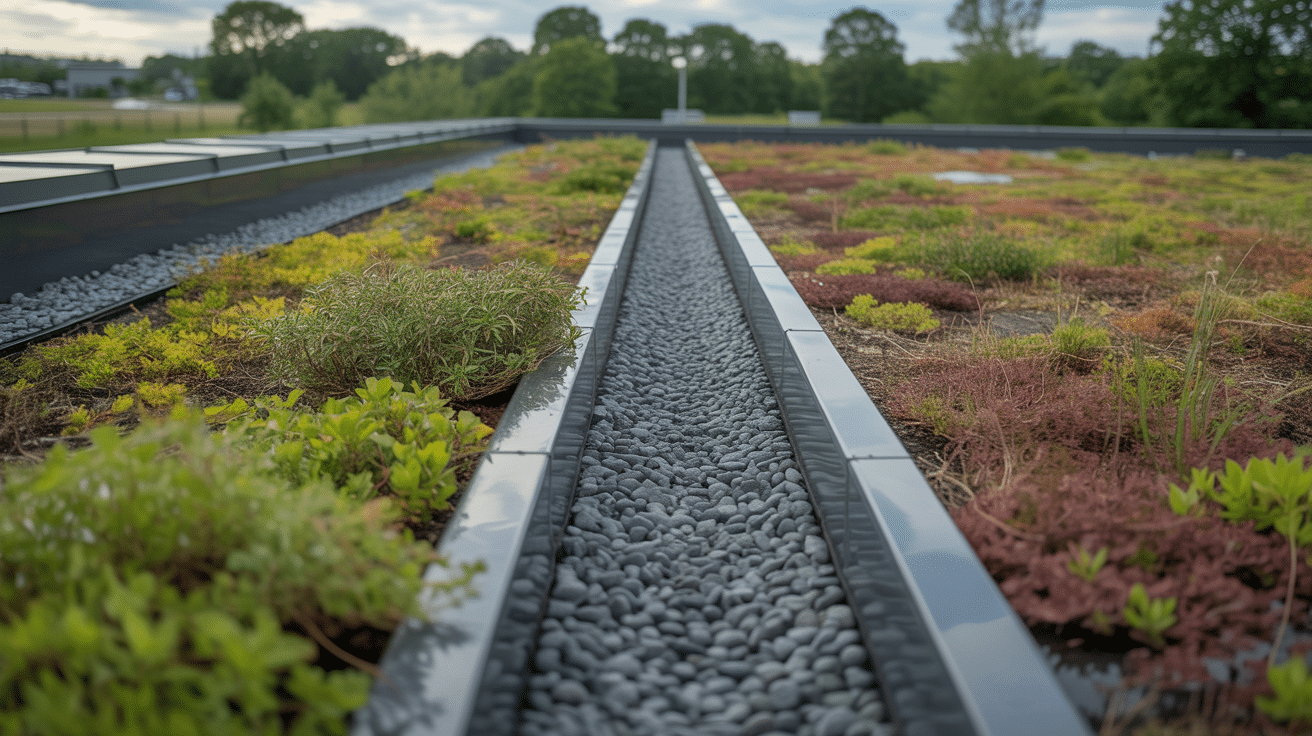
Smart homeowners pair ballast function with rooftop rainwater collection systems. Slope ballast subtly toward hidden gutter trenches that lead to cisterns or graywater storage tanks.
- Benefit: You get eco-friendly water reuse plus an extended roof lifespan from reduced ponding.
- Pro Tip: Make sure the ballast doesn’t block drainage paths or overflow routes.
Key Takeaways
So, is a ballasted roof right for you? It depends on three key factors I’ve covered.
First, your building structure needs to handle the extra weight safely. Second, your budget should account for both installation and long-term maintenance. Third, your local climate and building codes must support this system.
If all three check out, ballasted roofs offer solid performance and design flexibility.
But here’s my advice: don’t make this decision alone. Every home is different, and what works for your neighbor might not work for you.
Talk to a qualified roofing contractor who can evaluate your specific situation. They’ll assess your structure, local requirements, and help you decide if ballasted roofing makes sense for your home.


